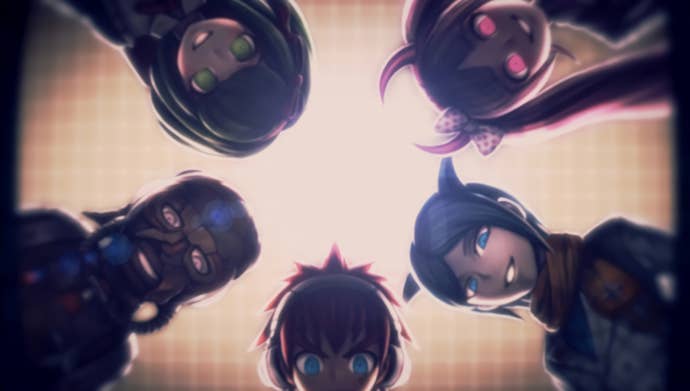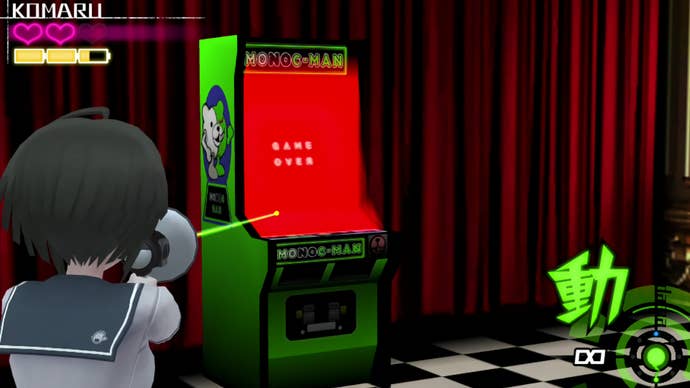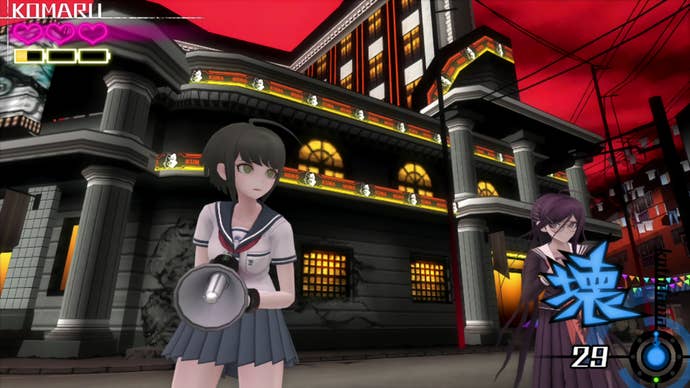Products You May Like
A word of caution: this game contains a depiction of sexual assault and makes frequent references to child abuse, and so this article also touches on those topics. Take care of yourself, and please don’t read this if you don’t wish to.
Danganronpa was one of my lockdown comfort games of choice, and I’ve spent the years since accumulating a painstaking understanding of the expanded universe that surrounds this trilogy of murder mystery visual novels. I’ve watched the complete anime, read tie-in novels and all the manga that’s been translated into English (I even started learning Japanese because the non-translated manga looks even better and it might actually be quicker than waiting for it all to come out); and I’ve even played all the way through the deeply weird spin-off shooter that’s celebrating its 10th birthday today.
Danganronpa Another Episode: Ultra Despair Girls was released for the PlayStation Vita on this day in 2014, and got a second life via PlayStation 4 and PC ports in 2017. The latter is what allowed me to snoop into others’ playing habits via Steam’s global stats, and learn that I’m among roughly 45% of players on the platform who’ve actually beaten this game after starting it.
That’s not actually a terrible retention statistic — I’ve seen highly-lauded games with a much starker drop-off rate — but to me it still tells a story about the oddball nature of this game. The way I see it, to even seek out an obscure story-led third-person shooter title spun-off from a series of visual novels, you’re probably quite nerdy about that series already and aiming for completionism. Seen in that light, the fact that only 45% of those presumed franchise die-hards stuck it out to the end credits shows what happens when the unstoppable force of staying power required to be a Danganronpa fan in the first place meets the immovably strange object that is Ultra Despair Girls.
I had so many different feelings over the course of playing this game. I loved it for starring side-characters from the original, injecting some much-needed long-term character development into a franchise that tends to wipe the slate and start afresh with a brand-new cast every entry. I resented it for its wildly unpredictable and ungenerous save points, which turned what should have been rewarding trial-and-error puzzles into unnecessary frustrations I bodged my way through as quickly and messily as needed. I was fairly indifferent to its shooting, to be honest; I grew up on janky mid-2000s action games, and UDG mostly convinced me to play along with the polite pretence that it was a retro throwback and not just a shooter made by devs who specialise in visual novels.
In the end, my main takeaway was that Ultra Despair Girls is an unmissable addition to Danganronpa lore, and for all its faults contains some of the best storytelling in the series, fleshing out backstories for multiple characters given short shrift in the main games, while adding several more who became iconic in their own right. Later entries into the franchise certainly assume that you’re as familiar with the characters and events of this game as you are with the two main-series titles that preceded it. Which is why it’s weird that Spike Chunsoft and co. don’t seem that keen on acknowledging it any more.
As I’ve already said, Ultra Despair Girls did get ported to PS4 and PC back in 2017, but that’s the last outing it had. While the three core Danganronpa titles have all by now also made appearances on Xbox systems, and were notably remastered for a Nintendo Switch collection in 2021 in a vague nod to the franchise’s 10th anniversary, Ultra Despair Girls has languished by comparison. Indeed, the Danganronpa Decadence Collection boasts that it includes four games — but quickly corrects your natural assumption by letting you know the fourth is a new, non-canon board game-style spinoff. The board game in question, Danganronpa S: Ultimate Summer Camp, even includes UDG characters along with those drawn from the rest of the franchise, but is presented without the game that gives them context.
.jpg?width=690&quality=70&format=jpg&auto=webp)
It’s a curious omission given that the Vita and the Switch are about as compatible as systems made by different companies can be, and porting between them is reportedly a comparatively smooth process. But it becomes significantly less odd when you consider that there were two big factors working against Ultra Despair Girls when it came to anthologising the Danganronpa franchise for the Switch. It’s a third-person shooter that plays completely differently from the visual novels that make up the main series, and it’s about as far from Nintendo’s family-friendly image as it’s possible to get.
Danganronpa’s already a series about vulnerable young people being manipulated into brutally murdering one another, but Ultra Despair Girls still somehow managed to be much, much darker. Despite the surreal presentation that it shares with the franchise as a whole, there’s no getting around the fact that the central theme of UDG is horrific violence committed both against and by children.

I do actually think that UDG largely deals with those themes fairly well, with a surprisingly empathetic (given the darkly comic tone of the series as a whole) focus on how such violence affects survivors in the aftermath, rather than depictions of the violence itself. There are, unfortunately, several places where the game badly fumbles this — most memorably an unskippable interactive scene where you as the main protagonist must defend yourself from a sexual assault or get a game over, which I imagine is where quite a few of the DNF’ing 55% dropped off.
To be clear, I mean it when I say that I still really enjoyed this game for the most part, even though the aforementioned scene came as an unpleasant surprise that it was difficult to push past. Ultra Despair Girls certainly isn’t the only work of fiction in history to fail to pull off the balancing act when attempting to blend harrowing realism and dark comedy. But all the same, I can easily see why all the content warnings in the world wouldn’t convince Nintendo to let UDG anywhere near one of its kid-friendly systems — which, by extension, means that other platforms getting the anniversary remasters now considered the definitive versions will also have to do without.

Ultimately, though, even if you were to do something to mitigate that one badly misjudged scene, the central problem with Ultra Despair Girls remains that it doesn’t really cater to any general demographic. Its one-strike-and-you’re-out puzzles aren’t intuitive enough to appeal to fans of that genre; serious action fans aren’t going to love sitting through hour-long cutscenes to get to the comparatively brief sections of janky shooting; and its scoring system punishes poor performance in combat, meaning it’s likely to prove too unforgiving for players primarily or exclusively into visual novels, even ones interspersed with minigames like the main Danganronpa series.
No, as I said at the outset, Ultra Despair Girls is really aimed at just one type of player: hardcore Danganronpa fans who’ll push on through any weird experiment series creator Kazutaka Kodaka cares to try out in order to get their lore fix. And what a lore fix it is! Which makes it quite ironic — even if it’s completely understandable — that the remastered collector’s edition of the series omitted it, despite physical copies coming wrapped in a £90 steelbook clearly aimed at those exact same fans.
